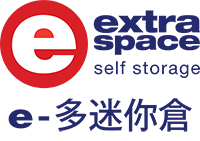
Renting storage space in Hong Kong can be a practical solution for businesses dealing with limited office space. With high property prices and compact workspaces on Hong Kong Island, many companies find themselves needing extra room to store documents, excess stock, or unused equipment through storage services. This is where self-storage becomes a reliable and cost-effective option when you choose a storage provider tailored to your needs, utilising mini storage space.
However, before moving everything into a storage unit, it’s crucial to conduct a thorough inventory audit. By assessing your current stock or assets, you can make informed decisions and select the most suitable storage provider. Consider a storage provider that helps you avoid paying for more room than you need. In this article, we’ll walk you through the step-by-step process of auditing your inventory, along with valuable tips to help you stay organised, save costs, and maximise efficiency.
Why Inventory Auditing Is Important Before Renting Self-Storage
Before jumping into the audit steps for your self-storage facilities, let’s take a moment to understand why this process matters.
A good inventory audit helps improve your storage experience.
- Determine what items truly need storage.
- Reduce clutter and unnecessary items.
- Accurately estimate how much space you need for your items before selecting a storage rental option. A flexible storage solution is required for items that may not fit in your living space.
- Improve item accessibility when stored.
- Cut down long-term storage costs.
Businesses often store items they no longer use, resulting in the need for larger units than necessary. With a thorough audit of your self-storage services, you can avoid this common mistake and maximise the value of your items. Consider utilising storage services in Hong Kong for improved organisation.
Step 1: Categorise Your Inventory
Start by grouping your items into clear categories. This makes the audit easier and helps you plan your storage layout later. Common business categories include:
- Documents: Contracts, financial records, HR files.
- Office Equipment: Computers, printers, monitors.
- Marketing materials: Flyers, brochures, banners.
- Seasonal stock: Festive packaging and promotional items.
- Furniture: Chairs, tables, and storage cabinets.
- Retail or product stock: Extra merchandise, samples.
You may also have personal items if you’re sharing the space with individuals with storage needs. Using a spreadsheet or inventory app can help keep everything organised from the start.
Step 2: Inspect Item Condition and Relevance
Once categorised, sift through each item to determine if it belongs in your self-storage facilities.
- Is it in good condition?
- Has it been used in the last 6–12 months in your self-storage unit?
- Is it still needed for current operations?
This step allows you to filter out outdated, broken, or irrelevant items. For example, outdated promotional materials with old branding or malfunctioning office equipment can be recycled or disposed of.
Decluttering at this stage will save storage space and reduce the time spent on moving and packing.
Step 3: Measure and Count Your Items
Next, create a detailed list of items, including their size and quantity. This helps you:
- Calculate the total volume of your inventory
- Choose the right unit size
- Prevent over- or underestimating your self-storage needs
For example:
- 15 archive boxes (medium-sized)
- 3 desks (150cm x 75cm each)
- 1 shelf unit (180cm tall)
- 4 printers (varied sizes)
You don’t need to be exact down to the millimetre. Still, a rough measurement gives you a much better idea of how much living space you’ll need for your belongings and storage space.
Step 4: Label and Document Everything
Before boxing anything up, label all items or containers clearly. Each label should include:
- A unique number or name (e.g., “Box A1”)
- A short description (e.g., “2022 receipts”)
- Any relevant handling instructions (“fragile,” “this side up”)
In your inventory sheet, match the label to the contents stored in your self-storage facility. For example:
This documentation makes retrieval easier and prevents confusion when your boxes are stored for extended periods.
Step 5: Identify Frequently Accessed Items
Consider whether you need to use self-storage in advance. These could include:
- Financial documents for tax audits
- Spare laptops or chargers
- Marketing banners for events
Separating frequently used items from rarely accessed ones allows you to plan the layout of your storage unit more effectively. It’s also helpful when selecting a unit, for example, choosing one with 24/7 access or closer proximity.
Step 6: Plan Your Storage Layout
Now that you’ve measured, labelled, and sorted your items, it’s time to plan how they will fit in your unit.
Here are a few layout tips:
- Heavy items go at the bottom to prevent crushing.
- Frequently used items can be stored in flexible storage to ensure easy access. They should be placed at the front for easy access.
- Use vertical space by stacking boxes or installing shelves.
- Leave a note in your storage rental unit to remind yourself of the items stored inside. Ensure that narrow aisles are kept clear for efficient access to your storage facilities. So you can walk in and reach the back.
You can sketch out a basic layout or take a photo of the packed boxes in your storage unit in Hong Kong to remind yourself how things are arranged. This makes it easier when retrieving something months later from your self-storage facilities.
Step 7: Digitise Your Inventory List
To make your inventory more accessible, consider keeping a digital version:
- Use Google Sheets, Excel, or inventory tracking apps
- Include a photo of each item or box for visual reference
- Share it with team members if more than one person manages the storage experience in your unit.
This also helps if you ever need to make insurance claims or track asset usage for audits.
Step 8: Decide on What Not to Store
As tempting as it is to store “just in case” items, it’s essential to evaluate what’s truly worth keeping in your self-storage unit in Hong Kong.
Do not store items in narrow aisles that hinder access to your storage facilities.
- Expired or outdated marketing material should be disposed of before considering what to keep in your storage unit in Hong Kong.
- Duplicate items you no longer use
- Items that will quickly become obsolete
Also, be aware of what cannot be stored due to safety or legal regulations, such as:
- Flammable materials should never be stored in self-storage facilities for safety reasons.
- Perishable food items should not be stored in self-storage facilities.
- Hazardous chemicals
A smaller, well-organised inventory ensures more efficient use of storage space. Using self-storage services can streamline your operations and keep your business lean.
Step 9: Estimate Costs and Choose the Right Storage Unit
After completing your inventory audit, you’ll be in a strong position to utilise mini storage solutions.
- Choose the correct storage unit size
- Avoid paying for extra space you won’t use
- Ask the right questions when comparing storage in Hong Kong
Consider:
- Will you require 24/7 access?
- What location is most convenient for your team?
Many storage companies, including us at Extra Space Asia – Hong Kong, offer unit size guides and storage calculators to help with decision-making.
Step 10: Plan the Move Efficiently
Now that everything is ready, consider how to transport your items safely and efficiently to your self-storage location in Hong Kong.
- Pack items securely in proper boxes
- Use bubble wrap or foam for fragile items when placing them in your locker.
- Rent a van or hire a moving service if needed to transport items to your self-storage facility.
- Avoid last-minute packing to reduce stress.
The smoother the move-in process, the quicker you can get back to running your business with peace of mind.
Common Mistakes to Avoid When Auditing Inventory
Here are a few pitfalls businesses often fall into:
- Skipping the audit altogether can result in poor space planning and higher costs due to inadequate storage facilities.
- Overpacking boxes – causing damage to contents or making them too heavy to lift
- Storing everything “just in case” – wasting space and money
- Forgetting to label boxes makes it difficult to retrieve items later
By avoiding these mistakes, you ensure that your storage space in Hong Kong works effectively in your favour, not against you, especially when utilising self-storage options.
Storage Solutions with Extra Space Asia – Hong Kong
At Extra Space Asia – Hong Kong, we understand the importance of maximising the use of your space. Whether you’re a small startup or an expanding enterprise, our self-storage units offer a flexible, secure, and affordable solution for all your business needs. We strongly encourage customers to audit their inventory before renting a mini storage space.
This step helps you:
- Choose the right unit size
- Avoid storing unnecessary items
- Save on long-term storage in Hong Kong costs
Our facilities offer:
- Select from a range of unit sizes tailored to your business needs in self-storage.
- 24/7 access for maximum convenience
- Clean, air-conditioned units for sensitive items
- Friendly staff to guide you through the process
If you’re unsure about the size of locker you need or have questions about our storage rental services, please don’t hesitate to contact us at your convenience. We’re here to make your storage experience in Hong Kong simple, stress-free, and cost-effective.
Make room for what matters — with Extra Space Asia.




